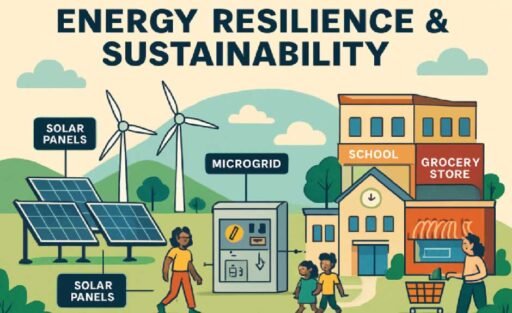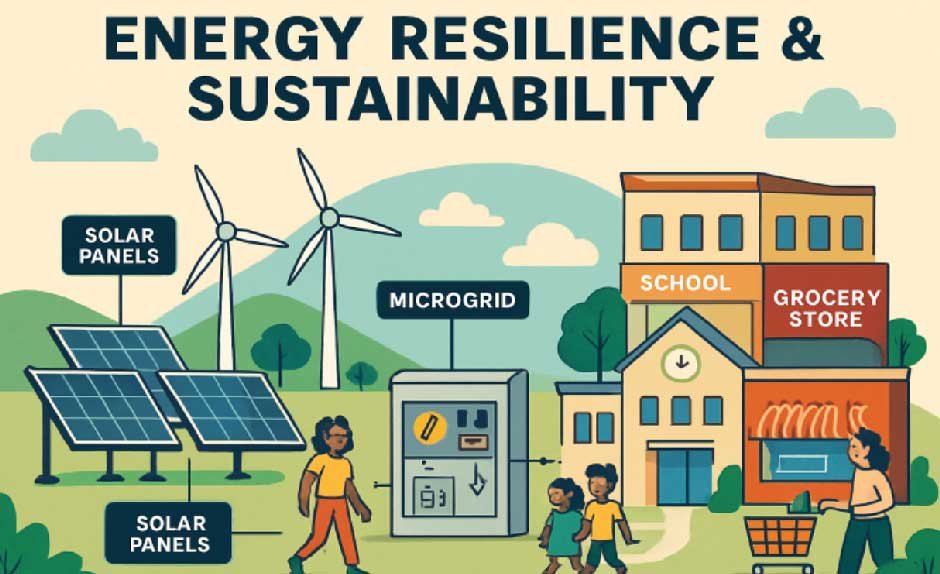Extreme weather events and rising energy challenges are making it increasingly vital for cities and towns to invest in resilient, sustainable power systems. Today’s communities not only need reliable energy to respond to emergencies but must also build solutions that protect the environment and foster long-term stability. Adopting proven approaches, such as microgrids, renewable resources, and robust emergency plans, is crucial for maintaining daily functions and supporting recovery after disruptions. For communities seeking greater autonomy and reliability, exploring Bloom Energy energy independence solutions presents a path toward resilient, low-carbon power solutions. This comprehensive guide outlines strategies that position communities to anticipate, withstand, and quickly recover from power outages and grid failures, while also supporting sustainability goals.
Understanding Community Resilience
Resilience in a community context refers to the ability to withstand, respond to, and recover from adverse events, such as natural disasters, cyberattacks, or power grid failures. True resilience encompasses not only sturdy physical infrastructure, but also supportive social networks, economic adaptability, and the health of natural ecosystems. Building resilience is a whole-community effort—one that values preparation, adapts quickly to challenges, and learns from each disruption to become stronger over time.
The Role of Sustainable Energy in Resilience
Modern life depends on a consistent energy supply for hospitals, water systems, transportation, and communications. According to the United Nations, sustainable energy sources such as solar, wind, and advanced energy storage can bolster local resilience by diversifying supply, lowering reliance on distant, vulnerable transmission lines, and reducing greenhouse gas emissions that drive severe weather. Smaller-scale, distributed energy systems are more resilient and easier to restore, making them essential components of resilient communities.
Implementing Microgrids for Localized Power
Microgrids are self-sufficient energy systems that serve a discrete geographic footprint—such as a school campus, hospital, or city block. These systems can seamlessly disconnect from the traditional grid and operate autonomously during broader outages, providing secure power to critical infrastructure. According to the U.S. Department of Energy, the City of Hartford developed a robust microgrid capable of keeping emergency shelters and drinking water plants fully powered through even the harshest storms. Case studies like these illustrate how local investment in adaptable energy technologies protects community well-being, economic activity, and public safety.
Adopting Renewable Energy Sources
Integrating solar panels, wind turbines, and other clean energy technologies creates a more distributed and less centralized approach to power generation. This means that if one part of the system fails, others remain functional, reducing the risk of widespread outages. Community-based projects also cut energy costs, support local jobs, and lower the carbon footprint. By choosing renewables, neighborhoods can become less susceptible to the problems that plague traditional grid systems, while simultaneously contributing to global climate solutions.
Benefits of Diverse Energy Sources
- Improved system reliability and flexibility
- Lower operating expenses and utility bills over time
- Fewer emissions and healthier environments
- Energy independence from volatile fuel markets
Enhancing Energy Efficiency
Reducing energy consumption through efficiency measures helps communities do more with less—especially crucial in emergencies when resources may be strained. Retrofitting public and private buildings with energy-efficient lighting, insulation, and HVAC systems not only lowers bills but also stretches the capacity of backup power sources. Strategic upgrades make it easier to maintain essential operations when both the grid and fuel access are compromised.
Developing Emergency Energy Plans
Resilient communities excel at preparation and planning. Every local government and large institution should draft and test emergency energy plans that address:
- Identification of essential facilities and services
- Deployment of backup generators or battery storage systems
- Prioritization of fuel, equipment, and personnel resources during crises
- Partnerships with utilities and technology providers for rapid response
- Community-wide drills and educational outreach to improve readiness
Investing in Energy Storage Solutions
Energy storage is a game-changer for enhancing grid resilience and promoting renewable energy adoption. Modern battery systems and other storage methods enable communities to store surplus solar or wind power for use during outages or periods of peak demand. This strategic reserve helps smooth out fluctuations from intermittent renewable sources and bridges gaps when the grid is down, minimizing interruptions to essential services.
Fostering Community Engagement and Education
Raising awareness about sustainable and resilient energy solutions is key to their widespread adoption. Community engagement—through workshops, public forums, and incentive programs—empowers residents to invest in home solar, practice conservation, or volunteer during emergencies. Education also equips people with the knowledge to act quickly in crises and ensures equity, so that everyone benefits from new technology, regardless of their income or background.
Conclusion
Resilient communities thrive on foresight, strategic investment, and collaboration. By embracing sustainable energy sources, local microgrids, robust emergency plans, and active civic engagement, cities and towns can secure a reliable energy future—no matter what challenges arise. The journey to resilience is ongoing, but with every investment in sustainable solutions, communities build a safer, greener, and more reliable tomorrow.





